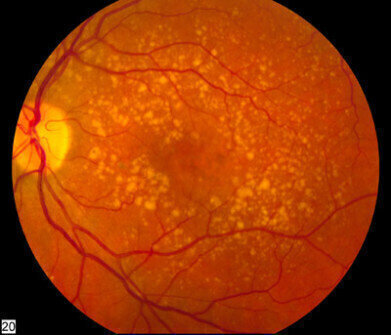HPLC, UHPLC
Preserving your Eyesight
Dec 18 2015
In the UK, more of the population are surviving to old age that ever before. Figures from the Office of National Statistics suggest that over the next century the number of people reaching the grand age of 100 will significantly increase — with statistics suggesting that one in three babies born in 2013 will live to be 100 years old.
As the population ages, more of us will succumb to age related illnesses — illnesses associated with humans becoming biologically older. Of course, as medicine progresses these illnesses — such as cancer, arthritis, type 2 diabetes and Alzheimer’s disease — become easier to treat. But that doesn’t mean you want to succumb to one.
The eye of the beholder
One illness that comes under the age-related banner is AMD — age-related macular degeneration — a condition that affects the eyes and can lead to loss of vision in the central area of the eye. The macula, or macula lutea (yellow spot), is an area on the retina where light coming into the eye is focused and is used for close up work such as reading and writing.
The retina is comprised of specialized cells known as rods and cones — photoreceptor cells that convert the energy of photons into a signal our brain interprets as light. The rods and cones have different functions and locations on the retina— with the rods able to register a single photon whilst the cone cells need a higher intensity of light. Different cone cells respond to different wavelengths of light — hence we see different colours. The majority of the cone cells are located at the back of the retina including in the macula region.
AMD is caused when there is deterioration of the cells due to aging (dry AMD) or a problem with new blood vessels in the area of the macula (wet AMD). There is no cure for AMD — current treatment options are designed to slow the progression of AMD. One of the options to slow the progress of AMD — and one which may reduce the risk of getting AMD involves macula carotenoids.
Nature’s sunblock
The macula lutea is yellow due to the presence of two carotenoid pigments — lutein and zeaxanthin — we obtain from fruit and vegetables. A third carotenoid, meso-zeaxanthin (a chiral agent to zeaxanthin) is also found in the macula and it is thought that the body synthesizes it from lutein.
The carotenoids help the macula in two ways: by stopping harmful blue light from reaching the retina and by mopping up antioxidants around the macula. To help people suffering from AMD patients take supplements containing the carotenoids — with research suggesting this can help slow down the advance of AMD — preserving the patient’s eyesight.
HPLC is one method used to analyse samples for carotenoids, although advanced techniques are sometimes required to separate chiral molecules as described in the article, Automated Development of Reversed-Phase HPLC Methods For Separation of Chiral Compounds.
Carrot anyone?
Image via Wikimedia Commons
Digital Edition
Chromatography Today - Buyers' Guide 2022
October 2023
In This Edition Modern & Practical Applications - Accelerating ADC Development with Mass Spectrometry - Implementing High-Resolution Ion Mobility into Peptide Mapping Workflows Chromatogr...
View all digital editions
Events
Apr 23 2024 Kintex, South Korea
Apr 23 2024 Seoul, South Korea
Apr 28 2024 Montreal, Quebec, Canada
May 05 2024 Seville, Spain
May 15 2024 Birmingham, UK














